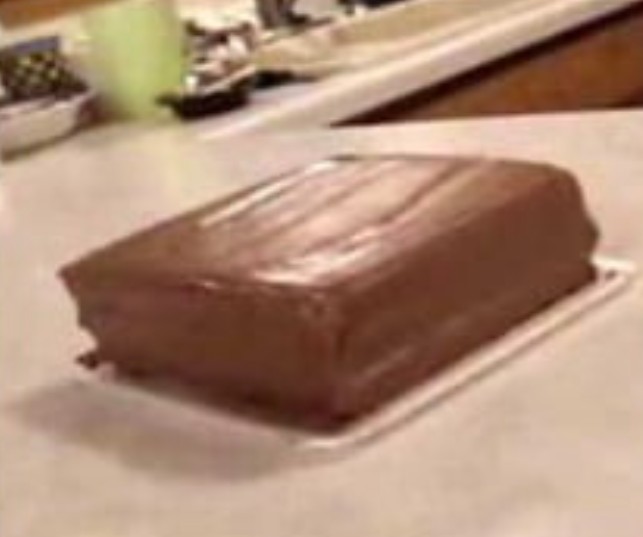Cake Farts Original Video and the Controversial Cake
The internet is no stranger to strange, shocking, or downright bizarre viral content. Among the countless memes, pranks, and shock clips that have circulated over the years, few stand out as much as the infamous “Cake Farts original video.” At first glance, the title itself may sound absurd, but it perfectly encapsulates what viewers are about to witness: a girl, a cake, and a controversial act that stunned, disgusted, and amused millions.

Emerging from the era when shock humor dominated corners of the internet, the video quickly became a cultural talking point. Some found it hilarious, others disturbing, but almost everyone who stumbled across it remembered it. More than just a piece of internet oddity, “Cake Farts” became a symbol of the early web’s anything-goes culture, where viral fame was built on how much you could shock or surprise people.
Contents
Background of the Video
The “Cake Farts” video appeared online in the late 2000s, when shock sites and underground forums were at their peak. The premise was deceptively simple: a young woman enters a room, sets down a frosted chocolate cake, and proceeds to interact with it in a way that no one expected. Without diving into explicit details, the performance was built on combining humor, fetish elements, and absurdity.
The uncut Cake Farts video is being hunted by the online community
Unlike polished YouTube skits or professional productions, this video had the raw, low-budget aesthetic of underground internet content. There was no introduction, no explanation, and no attempt at context it was simply the act itself. That, perhaps, made it even more shocking.
One of the mysteries surrounding the video was the identity of the performer. Unlike modern viral stars who quickly become internet celebrities, the woman behind “Cake Farts” remained anonymous. To this day, her name has never been confirmed, making the clip more of a cultural artifact than a personal scandal.
Viral Spread on the Internet
The video first circulated on niche websites and quickly migrated to forums, chatrooms, and eventually mainstream social media. Sites like 4chan, Something Awful, and Reddit became key hubs for sharing and discussing it. In the same way that memes like “Rickrolling” spread, “Cake Farts” became a reference point that needed no explanation.

Internet users had wildly mixed reactions. Some laughed at the absurdity, calling it one of the funniest things they had ever seen. Others recoiled in disgust, asking why such a video even existed. The shock factor became its own form of entertainment, with people daring their friends to watch it just to capture their horrified reactions.
The viral spread of “Cake Farts” placed it in the same category as other infamous shock videos such as “2 Girls 1 Cup” or “Lemon Party.” Each represented a different way of pushing the boundaries of what people were willing to watch online. Unlike some of its more extreme counterparts, however, “Cake Farts” had a strange comedic undertone that gave it a wider appeal.
Public Reactions and Controversy
What made the video so controversial was not just its content but also the mixing of food and bodily humor two things society typically keeps far apart. Cakes, in particular, symbolize celebrations, birthdays, and happy occasions. To see one used in such a crude and unconventional way struck many viewers as offensive.
Online debates raged about whether the video was simply juvenile humor, an attempt at fetish performance, or a parody of adult entertainment. Critics argued it was vulgar and degrading, while defenders insisted it was no worse than slapstick comedy just more graphic.
What kept the video alive in online discussions was its meme potential. Phrases like “Everyone remembers Cake Farts” began appearing on message boards, turning the video into a shorthand for shocking, absurd internet humor.
Media and Pop Culture References
While mainstream television never directly showcased the video, its influence seeped into online comedy and internet culture. Blogs wrote about it as an example of how far the internet had gone in chasing shock value. Podcasters, comedians, and meme pages referenced it as a piece of “internet history” that almost everyone in certain circles had seen.
The video became part of the internet’s unofficial canon of shock memes alongside classics like “Tubgirl” and “Blue Waffle.” Even if someone had never watched the full clip, the mere mention of “Cake Farts” was enough to spark laughter, groans, or knowing nods.
Psychological and Social Analysis
Why do people share and watch bizarre videos like this in the first place? Psychologists suggest that curiosity, disgust, and taboo-breaking humor are powerful motivators. Humans are naturally drawn to things that shock or disturb them, especially when those things are socially forbidden.
In the context of the internet, where anonymity allows people to explore without judgment, videos like “Cake Farts” thrived. Viewers could laugh, gag, or cringe in private, then share the link with friends to watch their reactions.
The viral success of such videos reflects a broader truth: the internet has always been a playground for testing boundaries. In the late 2000s, when content moderation was loose and platforms encouraged wild creativity, shock humor was one of the most effective ways to go viral.
Legacy of the Video
Today, “Cake Farts” is remembered less for its explicit content and more as a symbol of early internet culture. It stands alongside other viral oddities that shaped online humor before platforms like TikTok and Instagram polished the concept of virality into short, safe, advertiser-friendly clips.
For many, “Cake Farts” is nostalgic a reminder of a time when the internet felt raw, experimental, and unpredictable. Younger generations who hear about it often encounter it through references in memes, Reddit threads, or “internet history” discussions.
Would the video go viral in today’s internet environment? Probably not in the same way. Modern platforms enforce stricter rules about explicit content, and audiences have shifted toward more mainstream forms of humor. Still, as a piece of shock folklore, “Cake Farts” retains its place in the digital archives.
Ethical Considerations
The “Cake Farts” phenomenon also raises ethical questions about content creation and consumption. Was the video a harmless joke, or did it cross a line into fetish exploitation? Did the performer give full consent, and did she intend for the clip to reach millions worldwide?
These questions are especially relevant today, when discussions about consent, online safety, and content moderation are more prominent. What may have been dismissed as harmless fun in the 2000s is now subject to deeper scrutiny.
At the same time, debates about censorship remain. Should platforms ban such videos outright, or should people be free to create and consume whatever they like as long as no one is harmed? “Cake Farts” sits at the center of this tension both celebrated as a piece of comic absurdity and criticized as an example of tastelessness.
The “Cake Farts original video” may seem silly, vulgar, or pointless, but its impact on internet culture cannot be denied. It combined shock, humor, and taboo-breaking in a way that perfectly captured the spirit of the early viral web. For those who witnessed its rise, it became an unforgettable moment a clip that sparked laughter, disgust, and endless online debate.
In many ways, “Cake Farts” represents the wild, unfiltered nature of the early internet, when boundaries were constantly being tested, and anything unusual could become a viral sensation. While the digital world has evolved and polished itself, this strange video remains a cultural artifact a reminder that sometimes, the weirdest things leave the most lasting marks.
Hot News -Younglo Instagram Story Video Sparks and Public Reaction
Ryan Easley Tiger Video and Tragic Death in Oklahoma
Edwin Cruz Gomez Video and Tragic of Jhoanny Alvarez
Yordanis Cobos-Martinez Video Kill Chandra Nagamallaiah in Dallas Motel Beheading
Tyler Robinson Video and Allegedly Kill Charlie Kirk
Charlie Kirk Shooting Video on X (Twitter) Reddit and Close Up
Isabella Ladera y Beéle video viral con Erome and Controversy

